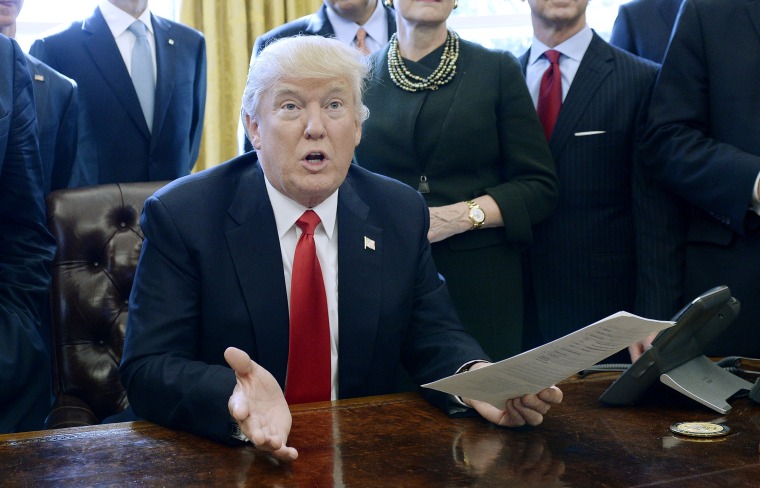It was just five days ago when Donald Trump was asked whether he'd take executive action to end his own family-separation policy. "Wait," the president replied. "You can't do it through an executive order."
It was just two days ago that Department of Homeland Security Secretary Kirstjen Nielsen told reporters, in reference to the administration's policy, "Congress and the courts created this problem, and Congress alone can fix it."
It was just this morning that Senate Majority Whip John Cornyn (R-Texas) rejected assertions that Trump could act unilaterally to address the problem he created. "He cannot," the Republican senator said. "It's going to require Congress to act."
And it was this afternoon that the president ignored all of this and put pen to paper.
President Donald Trump, under pressure from angry members of his own party, signed on Wednesday an executive order that is meant to keep families together at the border, halting a policy he instituted earlier this year. [...]Trump said the order "will solve that problem" of children being separated from their parents, but that it wouldn't end his administration's "zero tolerance" policy of charging everyone who attempts to cross the U.S.-Mexico border illegally, a decision that led to the current crisis.
The president who took it upon himself to separate families added, "I didn't like sight of families being separated."
The text of the executive order is online here. Note, about an hour ago, the original link created by the White House didn't work because someone in the communications department misspelled "separation."
In case this isn't obvious, Trump didn't need to sign an executive order on this. He made a conscious and deliberate choice to implement this brutal policy, and he could've simply picked up the phone and told the relevant officials to stop forcing children from the arms of their families.
But putting all of that aside, there's no reason for anyone to think this latest move ends the fight. On the contrary, it's more the end of the beginning than the beginning of the end.
Legal experts can speak to this in far more detail and with far greater authority, but Trump's executive order apparently keeps families together by directing officials to detain children with their parents. A New York Times report added, "The order said that officials will continue to criminally prosecute everyone who crosses the border illegally, but will seek to find or build facilities that can hold families -- parents and children together -- instead of separating them while their legal cases are considered by the courts."
Whether that's legal under the 1997 Flores settlement is not at all clear, and the White House's E.O. states that it will direct Attorney General Jeff Sessions to take the administration's position to court. Maybe that will go well; maybe it won't.
We also don't yet have a sense of the practical implications: where will these immigrants be held? What is the administration prepared to do to reunite families that were separated? Is the White House eyeing an indefinite-detention policy?
For Trump's critics, it's encouraging that the political pressure convinced the president that his position was unsustainable. But the distance between here and a credible end-point is great.
